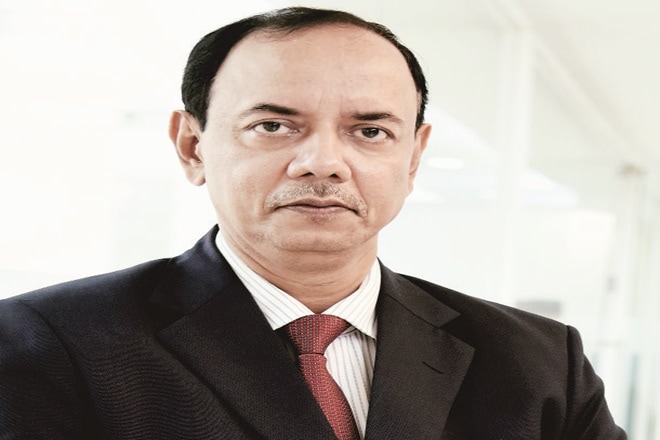With the insolvency code in place, resolution of NPAs should happen in a time-bound manner and the performance-linked capital infusion programme is a step in the right direction, says Rajesh Mokashi, managing director & CEO, CARE Ratings in a conversation with Shamik Paul. Excerpts from the interview:
How do you read the state of the Indian economy and the impact of the reforms initiated?
Since 2017 has been very different compared to a conventional year, it would be incorrect to assume that the economy will deliver growth on the regular scale. The country is going through significant structural changes and hence when one implements reforms on this scale, there is bound to be some transient pain. We estimate GDP growth of 6.7-6.8% this fiscal. But this is an induced slowdown because of the structural reforms. While we have seen some bounce back in the previous quarter, we are not sure if that is a clear indication of the growth in the near-term. I think there might be a few more hiccups before the GDP growth finally gathers steam. Once the dust settles, these reforms will be facilitators for the economy to grow at an elevated rate in a steady manner. In 2018-19, I expect the growth to be above 7%.
What is your take on the impact of demonetisation?
Demonetisation did have a transient slowdown effect on the economy. But it was a necessary step, as somebody had to bite the bullet. Implementation of the GST was another mega reform this year, which to my mind is moving in the right direction. Another major initiative taken by the government is the cleaning up of bad loans in the system. These reforms have come in close succession, and is hence bound to have a transient impact on the GDP, which is what we are witnessing today.
When do you see the private sector investment picking up?
Right now the average utilisation capacity is about 70%. For new investments to be made, the capacity utilisation should be around 80%. Private sector investment has not picked up pace in 2017. If we look at the way in which GDP growth is moving with demand conditions yet to take off, this may not appear to be the most opportune time for some sectors to undertake capital expenditures, but specific sectors may continue to see capex.
However, the government has taken massive initiatives to boost demand, be it the Bharatmala project, or projects related to smart cities and housing for all. These initiatives will have a positive impact on the private sector investments, albeit with a lag. But since these projects are stretched over a medium-term horizon, the entire investment won’t happen instantaneously. It will be spread over a few years in a phased manner. So the tickle-down effect will take some time. Overall, this augurs well for the economy and I believe that private-sector investments will gather momentum in the next fiscal.
How would you describe the health of the corporate sector?
About 3-4 years ago, when the annual GDP was growing at around 8-9%, companies set up large capacities. Since then, the GDP growth has tapered to 6-7%, and the demand growth has not kept up with the expectations with which the capacities were set up. This led to a mismatch in their cash flows and their liabilities, which eventually led to the large NPAs in our banking system. Large projects became NPAs and that affected the health of banks. This also made it difficult for other companies to get access to easy credit. I am not saying that the corporate sector is not growing, but it is not growing at the rapid pace at which we would have liked it to grow. This year has been luke-warm for the corporate sector. We expect 5-6% growth in the topline and about 4% growth in the bottomline. However, it will definitely improve in 2018. We don’t see large incremental NPAs getting reported going forward. The NPAs are growing at a slower pace, and more importantly, moving towards resolution. The banks are also being strengthened. That should boost activity in the corporate sector.
Do you think the banking sector is out of the woods?
The process of bringing the banking sector out of the woods has begun. It is a multi-pronged approach, where capital infusion is one aspect, cleaning-up of bad loans under the Insolvency and Bankruptcy Code, strengthening the governance and strategic positioning of banks could be the others.
The large amount of stressed loans in the Indian banking sector is a huge bottleneck. The banks are adversely affected by the large NPAs. We have accumulated these problems over a number of years, since there was no easy resolution process. Some of the problems, especially in sectors like power and infrastructure, still persist. With the IBC, it is expected that some resolutions will happen in a time-bound manner. The fact that strong rules are available will deter people from defaulting and they may resolve things early-on. So further accretion to NPAs may be checked due to timely interventions.
The performance-linked capital infusion programme is a step in the right direction. The Rs 2.11 lakh crore recapitalisation programme is fairly large; it is a good sum to begin with. Moreover, if the government sees that the banks need more capital, would it deny them? The answer, most probably, is no. But the government will have to introduce other reforms to strengthen the banks. There is a lot of deliberation going on between the government and the banks on the role of the PSBs. Some questions that are being discussed are: should they be similar to private sector banks? should the smaller banks perform the same functions as the larger banks? Eventually, in my opinion the PSU banks will find their own niche.


